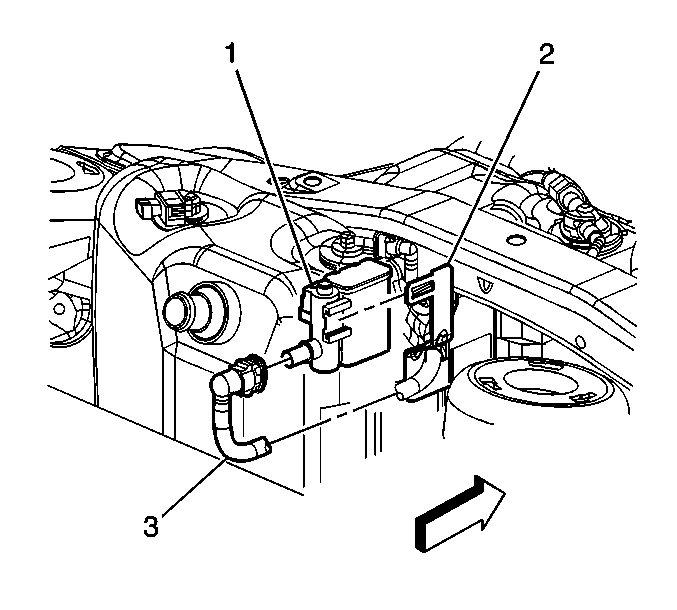Evaporative Emission Hoses/Pipes Replacement - Canister/Fuel Tank Vapor Pipe
Removal Procedure
Caution: In order to reduce the risk of fire and personal injury observe the
following items:
• Replace all nylon fuel pipes that are nicked, scratched or damaged
during installation, do not attempt to repair the sections of the nylon fuel
pipes • Do not hammer directly on the fuel harness body clips when installing
new fuel pipes. Damage to the nylon pipes may result in a fuel leak. • Always cover nylon vapor pipes with a wet towel before using a
torch near them. Also, never expose the vehicle to temperatures higher than
115°C (239°F) for more than one hour, or more than 90°C (194°F)
for any extended period. • Apply a few drops of clean engine oil to the male pipe ends before
connecting fuel pipe fittings. This will ensure proper reconnection and prevent
a possible fuel leak. (During normal operation, the O-rings located in the
female connector will swell and may prevent proper reconnection if not lubricated.)
Notice: Clean all of the following areas before performing any disconnections
in order to avoid possible contamination in the system:
• The fuel pipe connections • The hose connections • The areas surrounding the connections
- Remove the fuel tank. Refer to Fuel Tank Replacement .
- Disconnect the evaporative emission (EVAP) vapor pipe at the fill limiter vent valve (3).
- Disconnect the EVAP vapor pipe from the front rollover valve (5).
- Remove the front retaining clip (6) from the fuel and EVAP pipes and remove the EVAP vapor pipe.
- Disconnect the EVAP vapor pipe from the fill limiter vent valve (3).
- Disconnect the EVAP vapor pipe from the rear rollover valve (2).
- Remove the EVAP vapor pipe.

Installation Procedure
- Connect the fuel tank vapor pipe to the rear rollover valve (2).
- Connect the fuel tank vapor pipe to the fill limiter vent valve (3).
- Connect the EVAP vapor pipe to the fill limiter vent valve (3).
- Install the front clip (6) to the fuel and EVAP pipes at the front of the fuel tank.
- Connect the EVAP vapor pipe to the front rollover valve (5).
- Install the fuel tank. Refer to Fuel Tank Replacement .

Evaporative Emission Hoses/Pipes Replacement - Canister/Fuel Tank Vent Pipe
Removal Procedure
Caution: In order to reduce the risk of fire and personal injury observe the
following items:
• Replace all nylon fuel pipes that are nicked, scratched or damaged
during installation, do not attempt to repair the sections of the nylon fuel
pipes • Do not hammer directly on the fuel harness body clips when installing
new fuel pipes. Damage to the nylon pipes may result in a fuel leak. • Always cover nylon vapor pipes with a wet towel before using a
torch near them. Also, never expose the vehicle to temperatures higher than
115°C (239°F) for more than one hour, or more than 90°C (194°F)
for any extended period. • Apply a few drops of clean engine oil to the male pipe ends before
connecting fuel pipe fittings. This will ensure proper reconnection and prevent
a possible fuel leak. (During normal operation, the O-rings located in the
female connector will swell and may prevent proper reconnection if not lubricated.)
Notice: Clean all of the following areas before performing any disconnections
in order to avoid possible contamination in the system:
• The fuel pipe connections • The hose connections • The areas surrounding the connections
- Remove the fuel tank. Refer to Fuel Tank Replacement .
- Disconnect the evaporative emission (EVAP) vent pipe (3) from the EVAP canister vent valve (1).
- Remove the EVAP vent pipe from the fuel tank retainers.

Installation Procedure
- Install the EVAP vent pipe to the fuel tank retainers.
- Connect the EVAP vent pipe (3) to the EVAP canister vent valve (1).
- Install the fuel tank. Refer to Fuel Tank Replacement .

